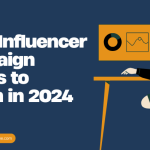Table of Contents
- Introduction
- 1. Personalized Customer Experiences
- 2. Data-Driven Decision Making
- 3. Enhanced Mobile Integration
- 4. Omnichannel Customer Support
- 5. AI and Automation
- 6. Social Commerce Growth
- 7. Sustainability and Ethical Practices
- Conclusion
- FAQs
Introduction
In today’s fast-paced digital landscape, cross-channel integration has become essential for businesses aiming to engage customers effectively. As we move into 2024, several trends are shaping the way companies integrate their marketing, sales, and customer service channels. This article will explore the top seven trends in cross-channel integration that are likely to dominate the business world in the coming year.
1. Personalized Customer Experiences
Personalization is no longer just a buzzword; it’s a necessity. In 2024, businesses will increasingly focus on delivering tailored experiences to their customers across various channels. Utilizing customer data, brands can create targeted marketing campaigns that resonate with individual preferences, resulting in higher engagement rates.
- Increased Customer Loyalty: Personalized experiences foster emotional connections with brands.
- Higher Conversion Rates: Tailored content drives customers to take desired actions, boosting sales.
Example: Brands like Amazon use sophisticated algorithms to recommend products based on previous purchases, enhancing user experience and increasing sales.
For more on personalization, check out this insightful article on Top 7 Content Personalization Trends 2024-2025.
2. Data-Driven Decision Making
As businesses gather more data than ever before, leveraging analytics for informed decision-making will be crucial in 2024. Companies will use advanced analytics to understand customer behavior, predict trends, and optimize marketing strategies across channels.
- Improved ROI: Data-driven strategies can significantly increase marketing effectiveness.
- Real-time Insights: Businesses can adapt quickly to changing market conditions.
For an in-depth look at data analytics in marketing, visit 10 Proven Strategies to Boost Your Content Marketing ROI.
3. Enhanced Mobile Integration
With more people using mobile devices for shopping and browsing, integrating mobile experiences with other channels will be critical. In 2024, businesses will prioritize mobile-optimized websites, apps, and payment options to ensure seamless transitions for users.
- Mobile-responsive Design: Ensuring that websites look and function well on all devices.
- Convenient Payment Solutions: Offering options like Apple Pay and Google Wallet to streamline purchases.
Visual Element:
| Mobile Integration Strategies | Benefits |
|---|---|
| Responsive Design | Enhanced user experience |
| Mobile Apps | Increased brand engagement |
| QR Codes | Quick access to information |
For more insights on mobile integration, check out Top 7 Mobile Marketing Trends 2024.
4. Omnichannel Customer Support
In 2024, providing consistent support across multiple channels will be vital. Customers expect to switch between platforms (social media, email, chat) without having to repeat themselves. Businesses will invest in integrated customer support systems to meet these expectations.
- Customer Satisfaction: Easier access to support increases customer satisfaction.
- Brand Consistency: A unified voice across channels builds trust.
Example:
Companies like Zappos and Apple are known for their exceptional omnichannel support, ensuring customers receive help whenever and wherever they need it.
For more on customer support trends, read this comprehensive guide on Top 7 Content Distribution Trends to Watch in 2024.
5. AI and Automation
Artificial Intelligence (AI) and automation technologies are transforming cross-channel integration. In 2024, businesses will increasingly implement chatbots and AI-driven analytics to streamline operations and enhance customer interactions.
- 24/7 Availability: Chatbots can provide instant support, enhancing customer experience.
- Efficient Operations: Automation reduces operational costs and increases efficiency.
Example: Brands like Sephora utilize AI to provide personalized recommendations and facilitate customer inquiries.
For more on AI’s impact, visit Top 10 AI-Powered Marketing Tools Transforming 2024 Strategies.
6. Social Commerce Growth
Social media platforms are evolving into direct sales channels. In 2024, expect to see increased integration between e-commerce and social platforms, allowing customers to shop directly through social media.
- Shoppable Posts: Users can purchase products directly from their feeds.
- Influencer Collaborations: Brands will partner with influencers to boost sales and reach.
Visual Element:
| Social Commerce Platforms | Features |
|---|---|
| Shopping tags, shoppable stories | |
| Marketplace, Facebook Shops | |
| TikTok | In-app shopping features |
For more on social commerce, check out Top 7 Social Media Marketing Trends to Watch in 2024.
7. Sustainability and Ethical Practices
As consumers become more environmentally conscious, businesses will need to adopt sustainable and ethical practices in their cross-channel integration strategies. In 2024, brands that prioritize sustainability will resonate better with customers.
- Brand Loyalty: Consumers are more likely to support brands that align with their values.
- Competitive Advantage: Sustainability can differentiate a brand in a crowded market.
Companies like Patagonia and TOMS are leading examples of brands that have successfully integrated sustainability into their business models.
For more on sustainability in marketing, visit Top 10 Content Marketing Tools to Boost Strategy 2024.
Conclusion
As we look ahead to 2024, cross-channel integration will continue to evolve, driven by technology and changing consumer expectations. By embracing these trends—personalized experiences, data-driven decisions, enhanced mobile integration, omnichannel support, AI and automation, social commerce, and sustainability—businesses can position themselves for success in a competitive landscape.
FAQs
Q: What is cross-channel integration?
A: Cross-channel integration refers to the seamless connection and coordination of different marketing and sales channels to provide a unified customer experience.
Q: Why is personalization important in cross-channel integration?
A: Personalization enhances customer engagement and fosters loyalty by delivering relevant content and experiences based on individual preferences.
Q: How does AI improve cross-channel integration?
A: AI helps automate processes, analyze customer data, and provide personalized interactions, improving efficiency and customer satisfaction.
Q: What are some examples of companies excelling in omnichannel support?
A: Companies like Zappos and Apple are known for their exceptional omnichannel support, ensuring customers receive help whenever and wherever they need it.
Q: How can businesses leverage social commerce?
A: By creating shoppable posts and collaborating with influencers, businesses can drive sales directly through social media platforms.
By staying ahead of these trends, businesses can create a cohesive strategy that not only meets customer expectations but also fosters growth and innovation in 2024 and beyond.





